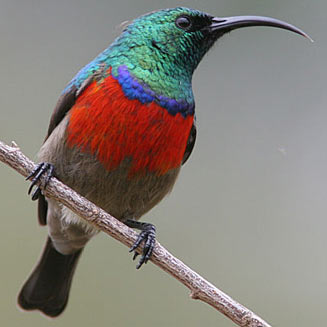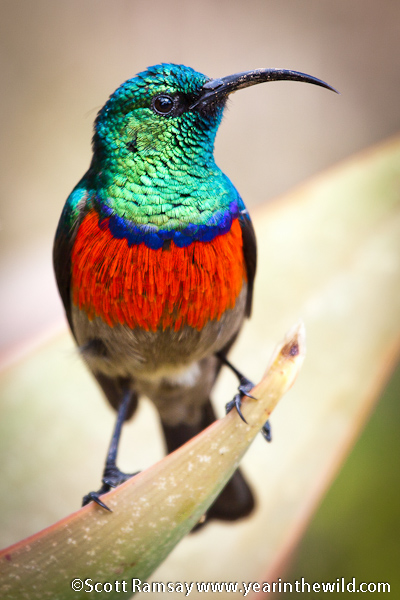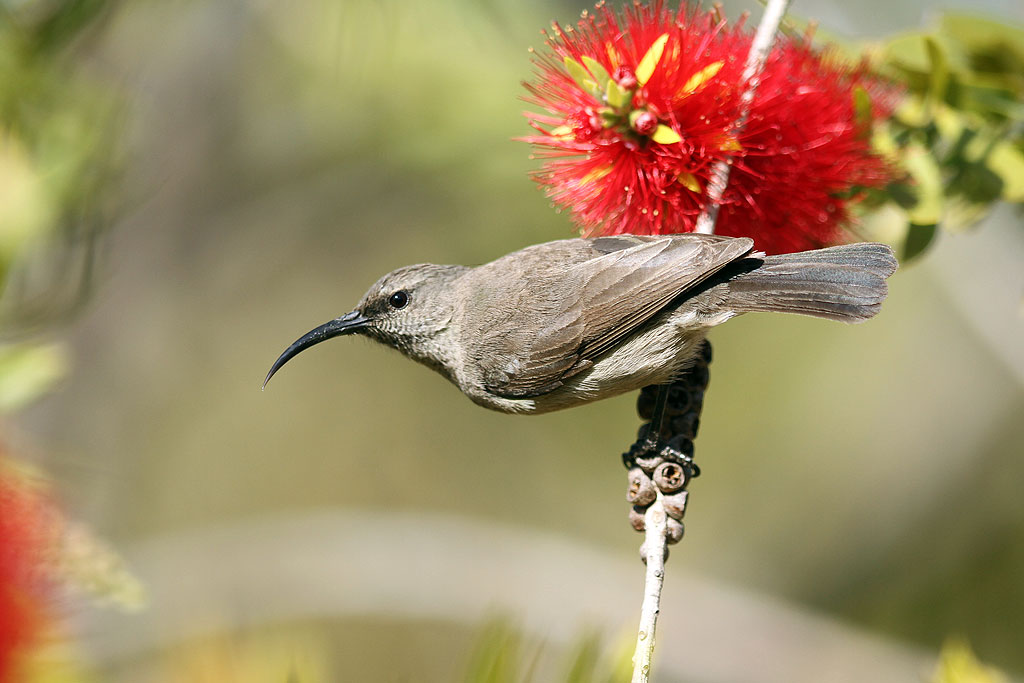
Cinnyris afra
SUBFAMILY
Nectariniinae
TAXONOMY
Certhia afra Linnaeus, 1766, Cape of Good Hope, South
Africa. Two subspecies.
OTHER COMMON NAMES
English: Larger double-collared sunbird, red-breasted sunbird;
French: Souimanga а plastron rouge; German: Grosser Halsband-
Nektarvogel; Spanish: Nectarina de Dos Collares
Grande.
PHYSICAL CHARACTERISTICS
4.5–4.9 in (11.5–12.5 cm); male 0.32–0.64 oz (9.0–18.0 g), female
0.29–0.49 oz (8.1–14.0 g). Similar in coloring to olive-
bellied sunbird, with a longer bill, larger size, and purplish
bands cross throat and rump.
DISTRIBUTION
C. a. afra: Cape and Western Cape Provinces of South Africa; C.
a. saliens: Eastern Cape, Free State, Northern, and Kwazulu-Natal
Provinces of South Africa, Lesotho, and western Swaziland.
HABITAT
Open scrubland, plains, protea moorland, fynbos, parks, gardens,
and forest edges.
BEHAVIOR
Aggressive with both sexes chasing each other. Males may fan tail
and display pectoral tufts, and they sing to one another when
perched close and swing bodies from side to side, while pointing
head skyward. Displaying birds sometimes swing upside-down on
perch. Bathe in birdbaths and attack reflections in windows.
Males perform elaborate courtship
BEHAVIOR
s, bobbing heads up
and down and swaying sideways; also indulge in display flights.
FEEDING ECOLOGY AND DIET
Takes nectar from flowers such as aloes, proteas, and figs, but
also feeds on juices from figs and grapes, insects, and spiders.
May take latter from their webs in hovering flight. Catches insects
on the wing.
REPRODUCTIVE BIOLOGY
Monogamous, but extra-pair copulations probably common,
judging by frequency of cloaca-pecking. Female builds nest using
spider webs to hold together grasses, bark twigs, rags,
feathers, wool, and other debris into oval shape. Nest lined
with feathers and wool, decorated with large leaves, lichen, and
even cloth, and either placed in bush or suspended. Two heavily
marked whitish eggs are laid at any time of year and incubated
by female only for two weeks. Nestlings cared for by
both parents for two weeks. Fledglings return to nest to roost
for first few nights. May be triple-brooded. Parasitized by
Klaas’s cuckoo.
CONSERVATION STATUS
Not threatened.
SIGNIFICANCE TO HUMANS
None known.
Other popular Animals
Photo Gallery of - Greater double-collared sunbird




 Animalia Life
Animalia Life